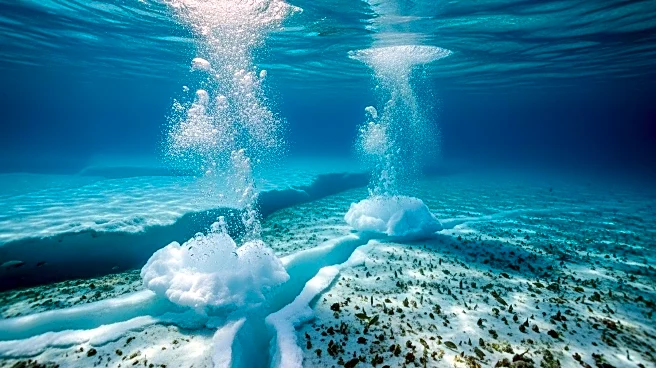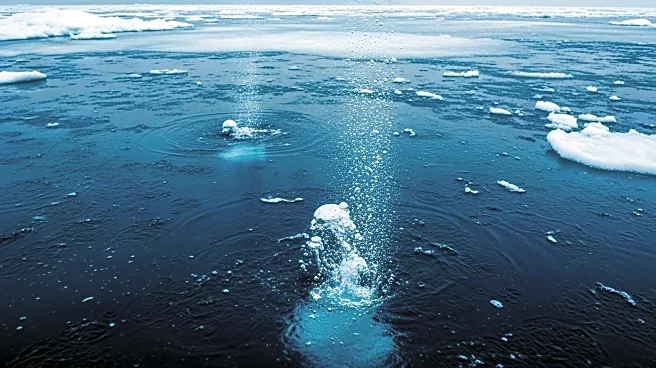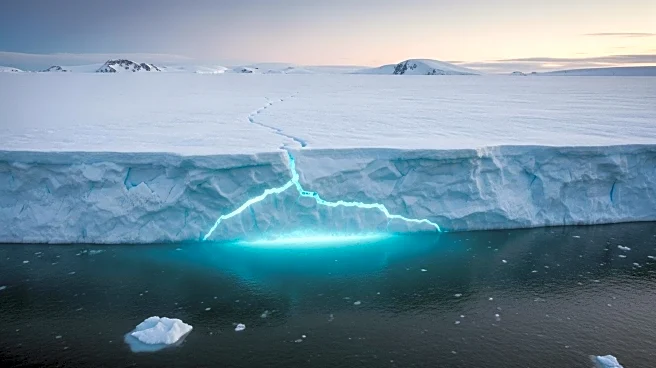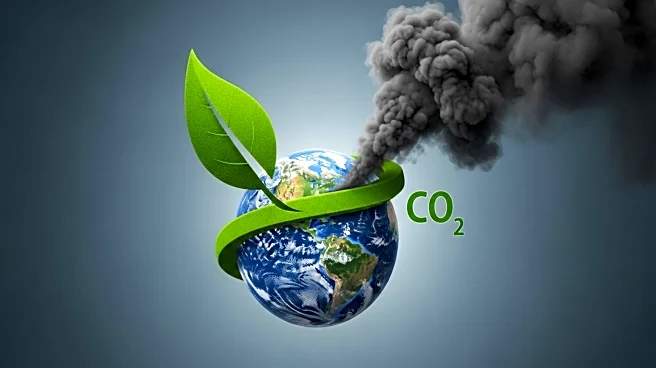What's Happening?
Researchers have discovered methane leaking from cracks in the Antarctic seabed, particularly in the Ross Sea region. Methane, a potent greenhouse gas, is escaping at high rates as the area experiences unprecedented warming. The phenomenon is described as widespread rather than rare, with numerous seafloor seeps identified in the Northern Victoria Land and McMurdo Sound. Methane is considered a 'super pollutant' by the U.S. Environmental Protection Agency, contributing significantly to global warming. The study highlights the need for further research to understand the dynamics of methane release in Antarctica.
Why It's Important?
The discovery of methane leaks in Antarctica is significant due to the gas's impact on climate change. Methane is 25 times more potent than carbon dioxide in terms of global warming potential, making its release a critical concern for climate scientists. The findings suggest that climate change may be accelerating the release of greenhouse gases from subsea reservoirs, potentially exacerbating global warming. Understanding these emissions is crucial for developing effective climate policies and mitigation strategies.
Beyond the Headlines
The study raises questions about the stability of Antarctic ice shelves and the potential for increased methane emissions as ice mass reduces. The role of methane emissions in Antarctica is not fully understood, necessitating further investigation. The findings underscore the importance of monitoring and addressing climate impacts in polar regions, which are particularly vulnerable to warming. The research may influence future climate models and policy decisions regarding greenhouse gas emissions.











